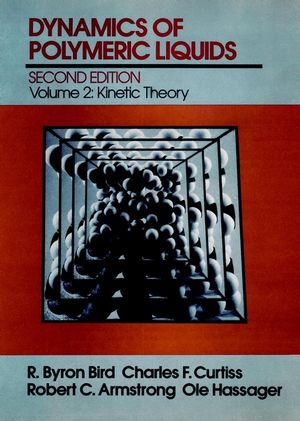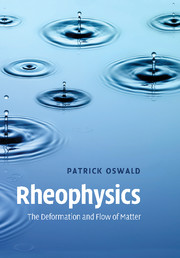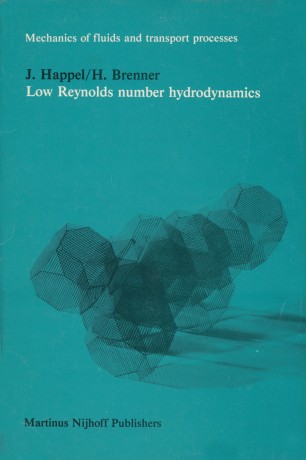Chapter 2, section 2.5, especially example 2.1 on effective stresses in suspensions of rigid particles, section 3.5 on Faxen relations, sections 5.5 & 5.6 on dilute suspensions of spheroids.
 N. Phan-Thien (2015) Introduction to Suspension Rheology,
chapter 1 of Rheology of Non-Spherical Particle Suspensions
(Elsevier,
Google
Books)
N. Phan-Thien (2015) Introduction to Suspension Rheology,
chapter 1 of Rheology of Non-Spherical Particle Suspensions
(Elsevier,
Google
Books)Concise introduction to suspensions of spheres and spheroids. Read this book online in Oxford.
 R. B.
Bird, R. C. Armstrong & O. Hassager (1987) Dynamics
of Polymeric Liquids, 2nd edition, volume 1, Fluid
Mechanics (substantial changes from 1st edition, 1977)
R. B.
Bird, R. C. Armstrong & O. Hassager (1987) Dynamics
of Polymeric Liquids, 2nd edition, volume 1, Fluid
Mechanics (substantial changes from 1st edition, 1977)Chapter 13 in volume 2 on bead-spring pairs (called “elastic dumbbell models”) or chapter 10 in volume 2 of the 1st edition.
 P. Oswald (2009) Rheophysics: The Deformation and Flow of Matter
(CUP,
Google
Books)
P. Oswald (2009) Rheophysics: The Deformation and Flow of Matter
(CUP,
Google
Books)Sections 1.5, 3.7, 7.5.1, appendices 7.A and 7.C.
 A.
Morozov & S. E. Spagnolie (2015) Introduction to
Complex Fluids, chapter 1 of Complex Fluids in
Biological Systems (Springer)
A.
Morozov & S. E. Spagnolie (2015) Introduction to
Complex Fluids, chapter 1 of Complex Fluids in
Biological Systems (Springer)
 J.
Happel & H. Brenner (1965,1983) Low Reynolds Number
Hydrodynamics (Springer,
Google
Books)
J.
Happel & H. Brenner (1965,1983) Low Reynolds Number
Hydrodynamics (Springer,
Google
Books)Some relevant papers:
D. Saintillan & M. J. Shelley (2013) Active suspensions and their nonlinear models, Comptes Rendus Physique 14 497–517G. K. Batchelor (1970) The stress system in a suspension of force-free particles, J. Fluid Mech. 41 545–570
Original paper on how to define the average stress in a suspension without knowing the stress inside rigid particles
E. J. Hinch & L. G. Leal (1972) The effect of Brownian motion on the rheological properties of a suspension of non-spherical particles, J. Fluid Mech. 52 683–712
Fokker–Planck equation for suspensions of passive rods
P. J. Dellar (2014) Lattice Boltzmann formulation for linear viscoelastic fluids using an abstract second stress, SIAM J. Sci. Comput. 36 A2507–A2532 (reprint)
Compares the evolution of the pressure tensor in kinetic theory with the upper and lower convected Maxwell stress evolution equations
D. F. James (2009) Boger Fluids Annu. Rev. Fluid Mech. 41 129–142
Describes a class of real fluids that are viscoelastic but not shear-thinning, so their behaviour is reasonably well described by the upper convected Maxwell and Oldroyd-B models.

 M. Renardy (2000) Mathematical Analysis of Viscoelastic Flows
(SIAM,
Google
Books)
M. Renardy (2000) Mathematical Analysis of Viscoelastic Flows
(SIAM,
Google
Books) S.
Kim & S. J. Karrila (1991, 2005) Microhydrodynamics:
Principles and Selected Applications (Dover,
Google
Books)
S.
Kim & S. J. Karrila (1991, 2005) Microhydrodynamics:
Principles and Selected Applications (Dover,
Google
Books)